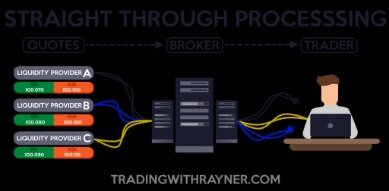Contents:


But most of the time, growth companies are strongly focused on innovating and disrupting their industries. Public companies in the U.S. with a market capitalization of $10 billion or more are categorized as large-cap stocks. Beyond the different types of stock issued by public companies, stocks may be categorized by market capitalization, or market cap. This is a measure of value that you get by multiplying the total number of a company’s outstanding shares by its current stock price. Preferred stock pays its holders guaranteed dividends, in addition to a chance for price appreciation like you get with shares of common stock. If a company’s common stock pays dividends, the preferred stock dividend may very well be higher.
However, as a result, investors may receive above-average returns. When a new company goes public through an initial public offering and shares are made available for purchase for the first time, there’s a strong chance the company is a small-cap stock. The stock market is a broad term for all of the markets and exchanges where stock brokers regularly buy and sell the shares of publicly traded companies. It is not possible to purchase stock in a privately traded company since they are not listed on the market.
Target date funds, sometimes known as lifecycle funds, are designed for individuals with particular retirement dates in mind. By law, they can invest only in certain high-quality, short-term investments issued by U.S. corporations, and federal, state and local governments. Some stocks, especially preferred stock, pay dividends which are subject to delay or elimination.
But understanding how stocks work and the investment options available to you is key. One way is to purchase stocks directly from a company, without using a broker, through a direct stock plan . This cuts out some of the costs you may incur by using a broker, but may require that you be employed by the company or already own stock in that company. You may also want to consider how much capital you have to invest because certain investments are more accessible for low-capital investors.
What Are the Different Types of Stocks?
Another way to buy stock in companies is through Direct Public Offerings which are usually sold by the company itself. A direct public offering is an initial public offering in which the stock is purchased directly from the company, usually without the aid of brokers. Instead, there are both “communities of interest” and “conflicts of interest” between stockholders and management .
This popular index includes well-known companies such as Apple, Microsoft and Walmart. Bankrate.com is an independent, advertising-supported publisher and comparison service. We are compensated in exchange for placement of sponsored products and, services, or by you clicking on certain links posted on our site. While we strive to provide a wide range offers, Bankrate does not include information about every financial or credit product or service.

A beta of one means that the stock is moving in the same direction as the market, and matches the volatility of the market as well. A beta greater than one means that the stock is moving in the same direction as the market, but with significant volatility. Pulse Empowering companies to connect with their retail investors. Income stocks are top-rated among retired people, who frequently use them to pay for retirement expenses. Check your securities / MF / bonds in the consolidated account statement issued by NSDL/CDSL every month. The assumption is these stocks will increase in price, because they’re either currently flying under the radar or suffering from a short-term event.
Preferred stocks
Investors buy mutual fund shares from the fund itself or through a broker for the fund, rather than from other investors. The price that investors pay for the mutual fund is the fund’s per share net asset value plus any fees charged at the time of purchase, such as sales loads. Most mutual funds fall into one of four main categories – money market funds, bond funds, stock funds, and target date funds. A typical investing mistake is to concentrate a large percentage of your money in one stock or one type of stock. To help manage risk, many investors diversify — which means they spread their investment dollars strategically among different assets and asset categories.
It may be best to get in touch with a financial professional to help you put a plan together, and select some stocks to build your portfolio. Again, tools like Empower can also be helpful when determining the best path forward as it relates to your finances. By law, each mutual fund is required to file a prospectus and regular shareholder reports with the SEC.
They can be tomorrow’s large-cap companies or the fallen large-caps of yesterday. Mid-cap companies combine the stability of established businesses with more of the growth potential of smaller companies. If the company performs well, the sky’s the limit for common stock when it comes to gains from price appreciation. Some common stocks also pay regular dividends, but payouts are never guaranteed. One downside of common stock is that its shareholders are last in line to be repaid if the company goes bankrupt.
Stocks vs. Bonds: 4 key differences & how to choose in 2023 – Fortune
Stocks vs. Bonds: 4 key differences & how to choose in 2023.
Posted: Wed, 07 Dec 2022 08:00:00 GMT [source]
If you’re a beginner to investing or you’re particularly risk-averse, you may want to consider income stocks. These stocks aren’t usually seen as short-term investments, they are typically used as part of a long-term investment strategy. Value stocks, on the other hand, trade at a lower value than you might expect based on the performance of a company.
How to buy Сoca-Сola (KO) Stocks & Shares
How to buy Coca-Cola stock and make money – a complete overview for novice investors. How to trade Coca-Cola shares with minimal risk – choosing a broker and strategies. Dividend payments warm the souls of investors, especially if they are paid on a regular basis.
- U.S. Treasuries (“T-Bill”) investing services on the Public Platform are offered by Jiko Securities, Inc. (“JSI”), a registered broker-dealer and member of FINRA & SIPC.
- The dividends that preferred stockholders hold are guaranteed forever.
- Stock options issued by many companies as part of employee compensation do not represent ownership, but represent the right to buy ownership at a future time at a specified price.
- These will affect your financial goals, your risk and return requirements, and possibly your tax situation.
- Utilities stocks, healthcare stocks and consumer staples stocks are all considered defensive investments.
Eventually, sellers attracted to the high selling price enter the market and/or buyers leave, achieving equilibrium between buyers and sellers. Eventually buyers enter and/or sellers leave, again achieving equilibrium. However, in a few unusual cases, some courts have been willing to imply such a duty between shareholders. For example, in California, United States, majority shareholders of closely held corporations have a duty not to destroy the value of the shares held by minority shareholders. Although directors and officers of a company are bound by fiduciary duties to act in the best interest of the shareholders, the shareholders themselves normally do not have such duties towards each other.
Whether any planned tax result is realized by you depends on the specific facts of your own situation at the time your tax return is filed. Terms can vary greatly among preferred stock, so it’s important to understand the features before you invest. Stock markets can be volatile and price swings can be frequent — which means your stocks could lose a substantial amount of value in a very short time.
Stock
As stock prices go up and down over time, market capitalization ranges and whether a stock is considered small-, mid- or large-cap changes over time as well. In finance, stock consist of all the shares by which ownership of a corporation or company is divided. (Especially in American English, the word “stocks” is also used to refer to shares.) A single share of the stock means fractional ownership of the corporation in proportion to the total number of shares. Key investors can get preferred stocks, which allows them to receive dividend payments. While certain types of stocks can limit your potential return, they can also limit your potential losses. These stocks typically have predictable earnings and dividend payments.
Conversely, value stocks trade at a discount to what a company’s performance might otherwise indicate, typically having more attractive valuations than the broader market. Value stocks—such as financial, healthcare, and energy names—tend to outperform during periods of economic recovery, as they usually generate reliable income streams. Investors can track value stocks by adding the SPDR Portfolio S&P 500 Value ETF to their watchlist.
If you’re not willing to risk a lot, you might want to consider historically low-risk investments that offer smaller returns. Defensive stocks typically perform well in a wide range of economic conditions. A big reason for this is that the companies behind defensive stocks often sell essential products and services.
A preferred stockholder has a priority of claims against corporate assets in the event the company declares bankruptcy and reorganizes. As assets are liquidated, payments go first to creditors and bondholders; then preferred stockholders are paid and, last of all, common stockholders. With an improved understanding of basic market terminology, you are now one step closer to making wise investment decisions. Of course, sometimes decisions that appear unwise can pay off, too.
If you follow the news, you’ve probably heard that the Different types of stocks market has been quite strong recently. Knowing this, you may be interested in buying stocks and jumping into the market. U.S. Treasuries (“T-Bill”) investing services on the Public Platform are offered by Jiko Securities, Inc. (“JSI”), a registered broker-dealer and member of FINRA & SIPC. See JSI’s FINRA BrokerCheck and Form CRS for further information.
It is not intended to constitute investment advice or any other kind of professional advice and should not be relied upon as such. Before taking action based on any such information, we encourage you to consult with the appropriate professionals. We do not endorse any third parties referenced within the article. Market and economic views are subject to change without notice and may be untimely when presented here.
IPO stocks attract the interest of investors even if the investment community has no consensus about their growth and profit potential. A private stock needs at least a year after it becomes available to the public in order to retain its IPO stock status. In contrast to blue chip stocks, penny stocks represent downscale companies. Their stock values are so inexpensive that they typically cost less than $1 per share. Penny stocks are prone to dangerous schemes, generally used in speculative business models.
How Many Stocks Should Be In Your Portfolio? – GOBankingRates
How Many Stocks Should Be In Your Portfolio?.
Posted: Wed, 21 Sep 2022 07:00:00 GMT [source]
If you are looking to https://forex-world.net/ your money for the long term, there’s no better time to get into the stock market. Stock markets continually grow over time, which could help increase your net worth. The sooner you invest, the more time you have for your money to grow.
Please note Brokerage would not exceed the SEBI prescribed limit. NWIL also acts in the capacity of distributor for Products such as PMS, OFS, Mutual Funds, IPOs and/or NCD etc. All disputes with respect to the distribution activity, would not have access to Exchange investor redressal forum or Arbitration mechanism.
Yet with reliable business models that have stood the test of time, they can be good choices for those seeking more price stability while still getting some of the positives of exposure to stocks. There’s no precise line that separates these categories from each other. Value stocks are, for lack of a better term, a value for investors, as they may be undervalued by the market because a company may not be as new or exciting as a firm in growth mode. Value stocks are and have been a favorite of famed investors like Warren Buffett over the years. Small-cap stocks are — you guessed it — companies with relatively small market capitalizations, usually under $2 billion. There are a multitude of small-cap stocks on the market, as most companies don’t climb to market capitalizations of more than $2 billion, let alone $10 billion.